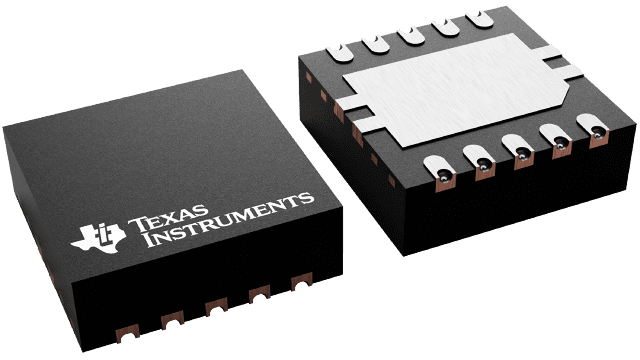Packaging information
| Package | Pins VSON (DRC) | 10 |
| Operating temperature range (°C) -40 to 150 |
| Package qty | Carrier 3,000 | LARGE T&R |
Features for the TPS7B85-Q1
- AEC-Q100 qualified for automotive
applications:
- Temperature grade 1: –40°C to +125°C, TA
- Junction temperature: –40°C to +150°C, TJ
- Input voltage range: 3 V to 40 V (42 V max)
- Output voltage range: 3.3 V and 5 V (fixed)
- Output current: up to 150 mA
- Output voltage accuracy: ±0.75% (max)
- Low dropout voltage:
- 225 mV (max) at 150 mA (VOUT ≥ 3.3 V)
- Low quiescent current:
- 18 µA (typ)
- 4 µA (max) when disabled
- Excellent line transient response:
- ±2% VOUT deviation during cold-crank
- ±2% VOUT deviation (1-V/µs VIN slew rate)
- Integrated voltage detection
- Power-good with adjustable threshold and programmable delay period
- Stable with a 2.2-µF or larger capacitor
- Functional Safety-Capable
- Package: 10-pin VSON with thermal pad
- Low thermal resistance (RθJA): 50.3°C/W
Description for the TPS7B85-Q1
The TPS7B85-Q1 is a low-dropout linear regulator designed to connect to the battery in automotive applications. The device has an input voltage range extending to 40 V, which allows the device to withstand transients (such as load dump) that are anticipated in automotive systems. With only an 18-µA quiescent current, the device is an optimal solution for powering always-on components such as microcontrollers (MCUs) and controller area network (CAN) transceivers in standby systems.
The device has state-of-the-art transient response that allows the output to quickly react to changes in load or line (for example, during cold-crank conditions). Additionally, the device has a novel architecture that minimizes output overshoot when recovering from dropout. During normal operation, the device has a tight DC accuracy of ±0.75% over line, load, and temperature.
The TPS7B85-Q1 is equipped with power-good and integrated voltage monitoring. The power-good delay and voltage threshold can be adjusted by external components. The integrated voltage detector can be used to monitor the input voltage and alert downstream components (such as MCUs) when the battery voltage begins to fall.
The device is available in a small VSON package that facilitates a compact printed circuit board (PCB) design. The low thermal resistance enables sustained operation despite significant dissipation across the device.
